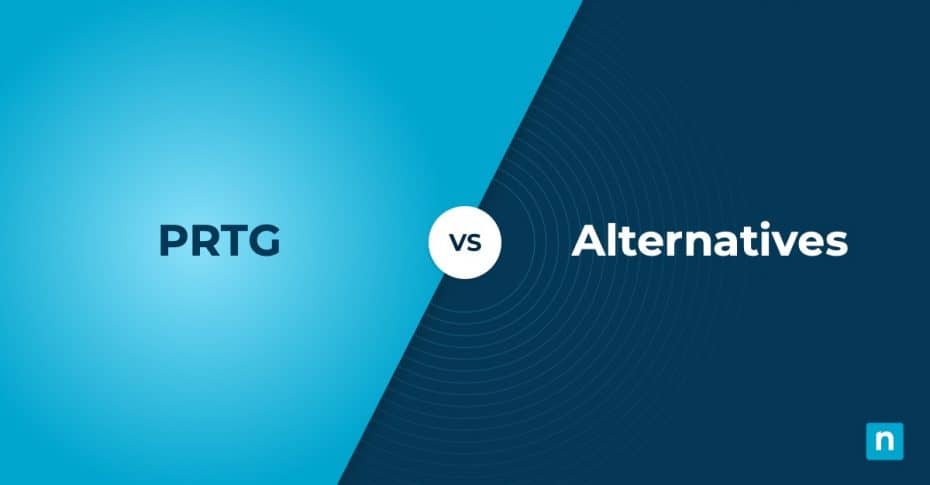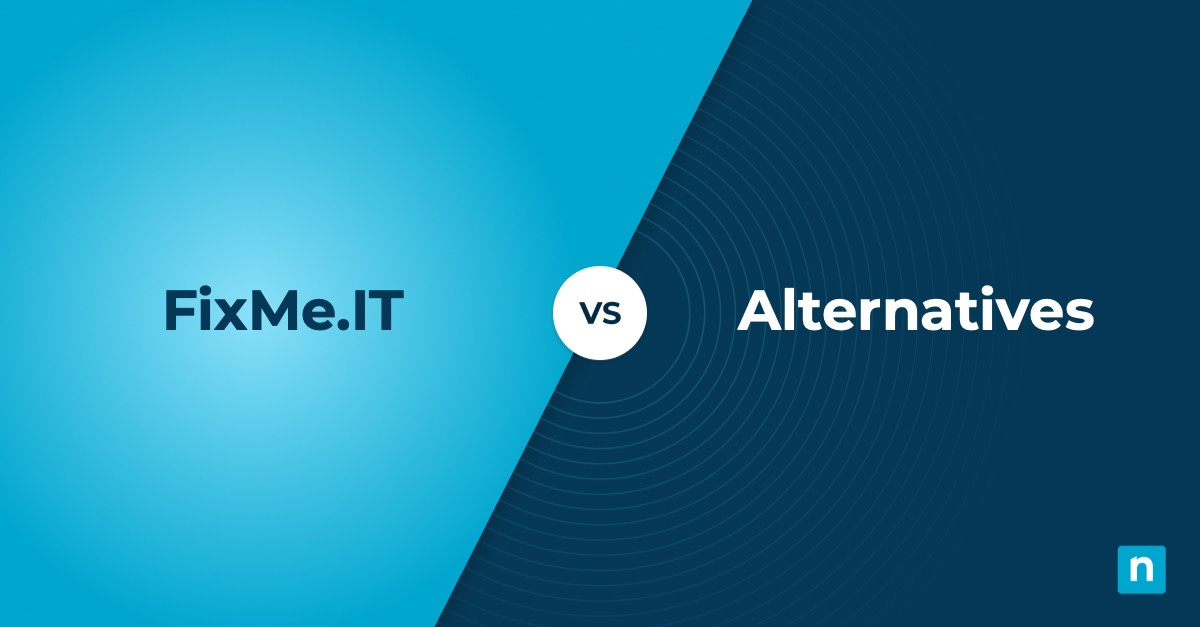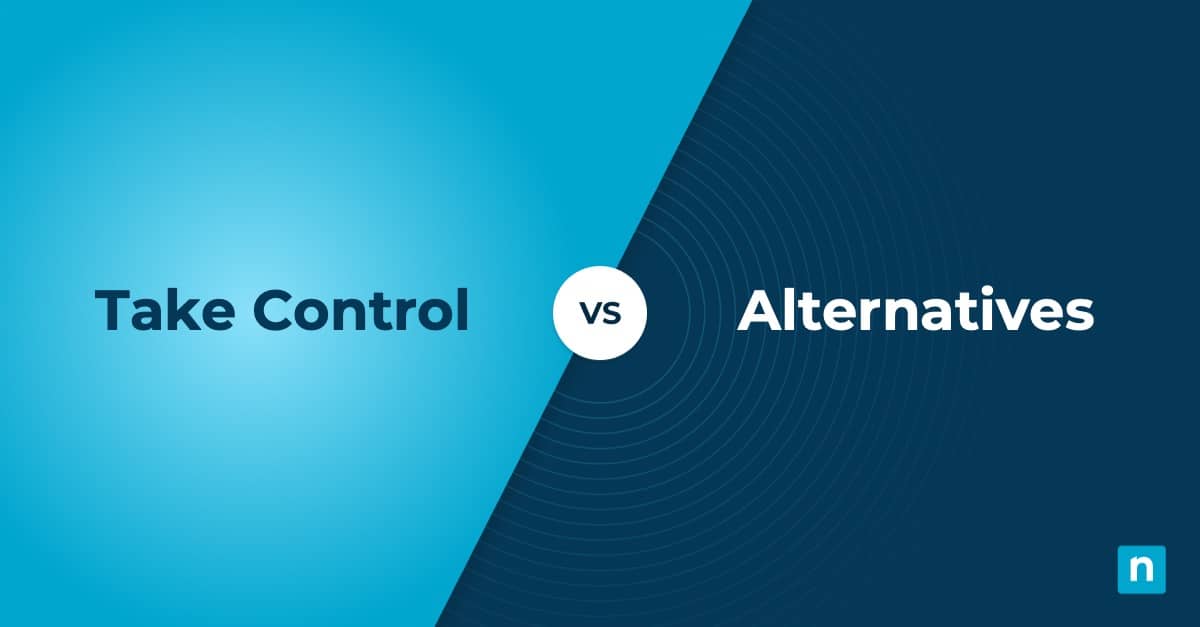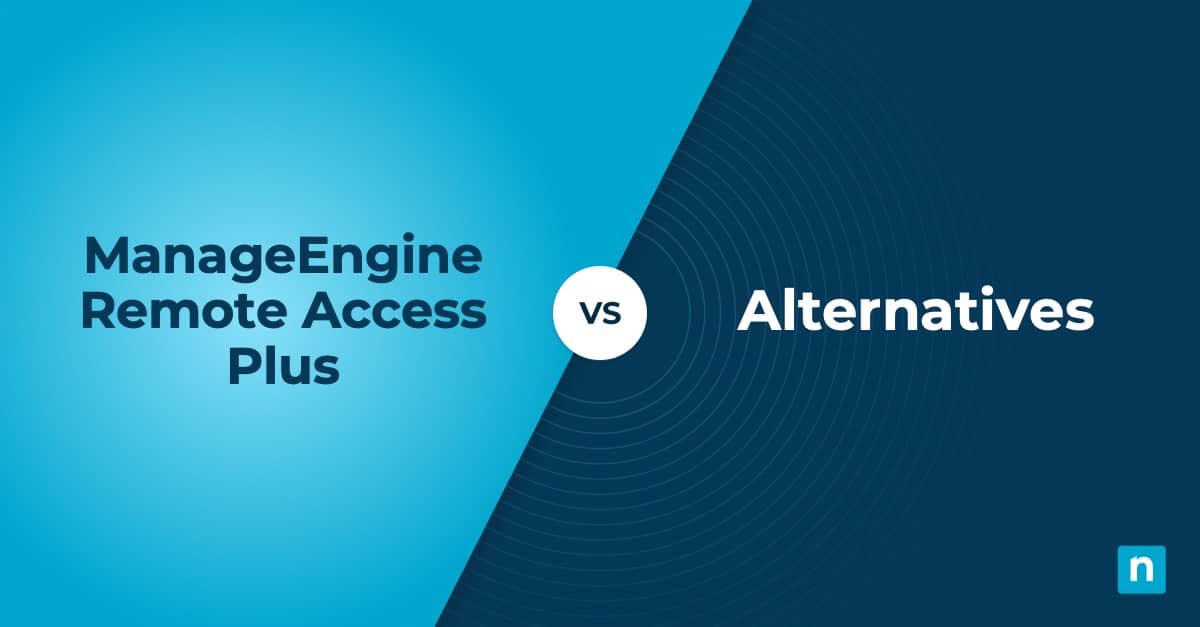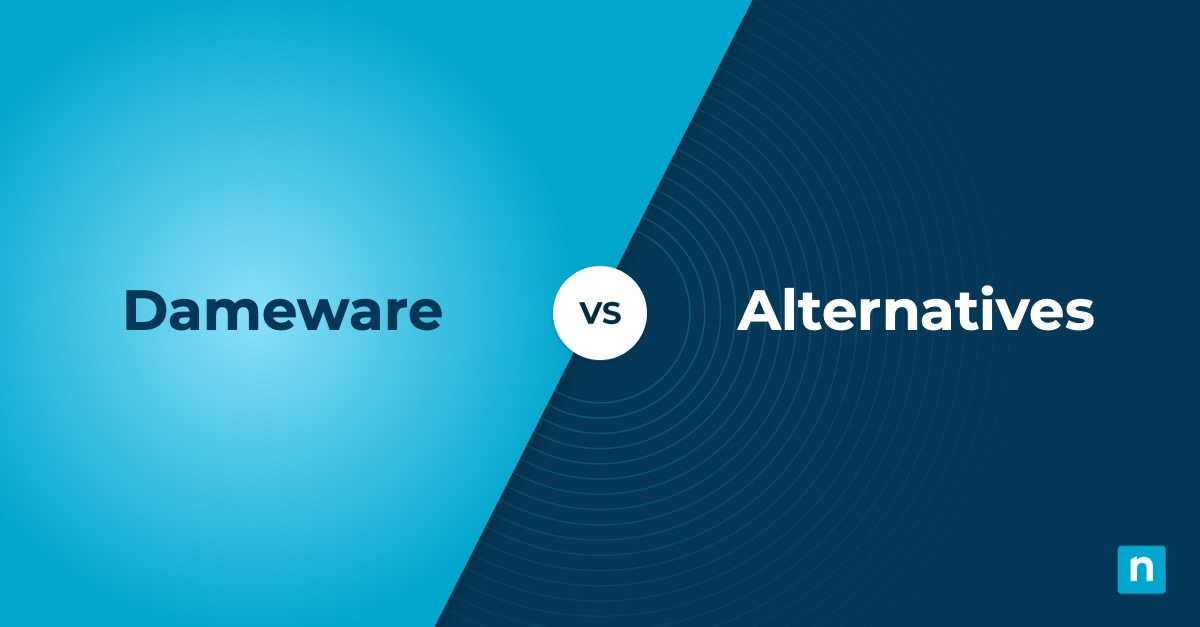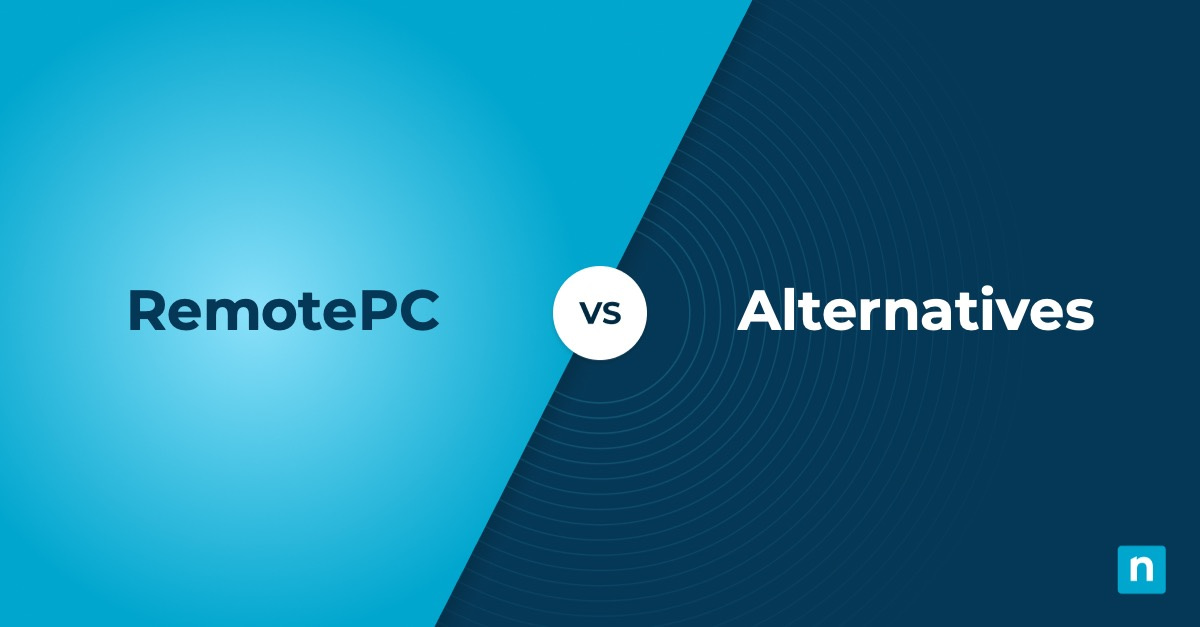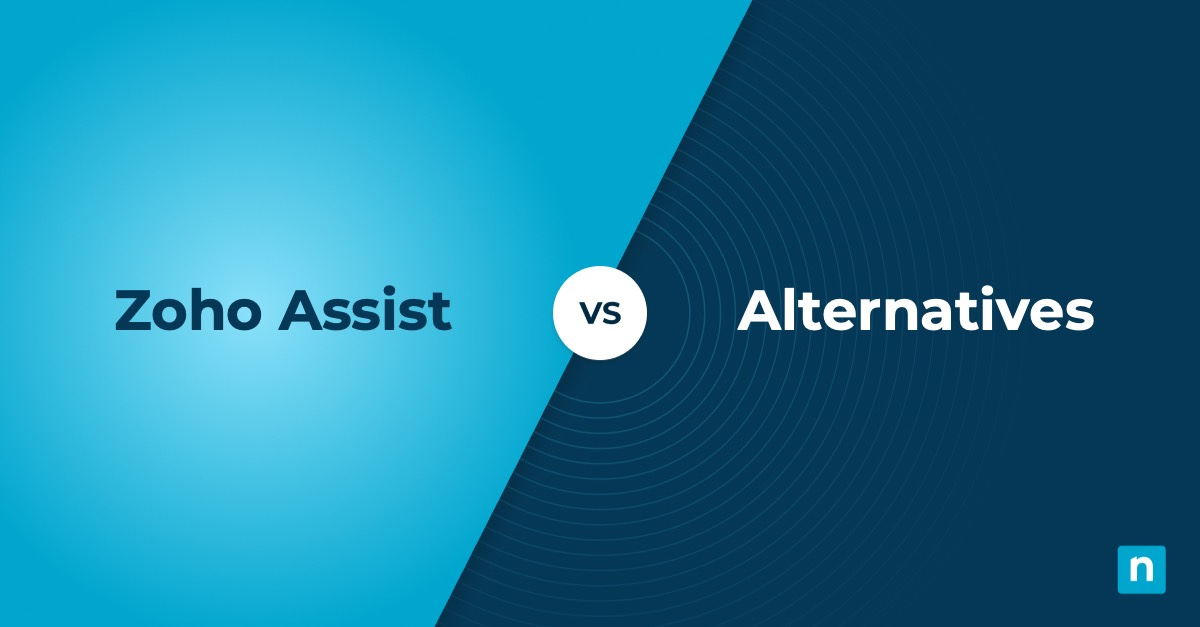Considering PRTG alternatives with more flexible payment systems and more third-party integrations? You’re in luck. We’ve checked leading review sites, evaluated the top 10 PRTG alternatives, weighed the pros and cons of each, and wrote this guide to help you choose the most suitable network monitoring software for your organization.
Gain complete visibility into the health and performance of your SNMP-enabled devices.
Using this guide on the top alternatives to PRTG
Network monitoring software enables businesses to monitor, manage, and protect their networks. Ensuring the health, performance, and security of network infrastructures greatly improves any organization’s operational efficiency. By providing real-time visibility into a network’s performance, traffic, and health, these platforms enable IT experts to preemptively identify and resolve issues before they lead to costly downtime.
Additionally, network monitoring platforms act as the first line of defense by alerting administrators to errors and anomalies. Consolidating networking monitoring with other IT management solutions, such as remote monitoring, patch management, and automation, can further boost your organization’s IT efficiency.
To supplement this guide, we also recommend checking out our list of the best network monitoring and management tools.
Table of Contents
- NinjaOne
- Zabbix
- LogicMonitor
- Auvik Network Management
- ManageEngine OpManager
- Nagios XI
- Site24x7
- Atera
- WhatsUp Gold
- Dynatrace
The top 10 PRTG alternatives
1. NinjaOne
NinjaOne is an automated endpoint management platform trusted by 20,000+ customers worldwide. Its software helps MSPs and IT teams manage and support their entire network from anywhere in the world. As a robust all-in-one solution, NinjaOne allows users to monitor and manage all their Windows, macOS, and Linux endpoints, servers, and networks.
NinjaOne’s network monitoring software provides complete visibility of SNMP devices such as routers, switches, firewalls, and more. The solution automatically detect new devices and provides real-time data on Netflow and hardware performance with custom OID monitoring. NinjaOne empowers IT enterprises of all sizes to deliver more reliable services and support, making it a valuable asset for businesses looking to streamline their IT operations.
Let’s look at some numbers:
- 98 customer satisfaction score (CSAT)
- 30-minute average support response time (12+ hours average for competitors)
- 95% of customers save time automating manual tasks
- 95% increased IT efficiency with automation
- $51.9k saved annually per company due to 65% reduction in human errors related to endpoints and patches
5 key points that make NinjaOne one of the best PRTG alternatives
1. RMM with network monitoring
NinjaOne provides real-time monitoring of SNMP devices – routers, switches, firewalls, printers, IoT devices, and more. Customizable alerts allow technicians to stay on top of things and resolve issues that appear.
2. Scalability
NinjaOne offers infinite scalability, making it a cost-effective choice as its flexibility means it can keep up with a growing business expanding IT infrastructure.
3. Easy-to-use console
NinjaOne’s user interface is designed for simplicity, making it easy to navigate and work with. Its informative dashboard avoids visual clutter and clearly displays critical alerts and key metrics.
4. Actionable alerting system
With NinjaOne’s highly customizable and automated alerts, users can keep track of ping and latency tests, port status, port map monitoring, configuration backup, and more, and take action when needed
5. World-leading support
When it comes to customer support, NinjaOne is #1 ranked in customer support and service. Reviews have praised NinjaOne’s support representatives for being knowledgeable and pleasant to talk to. With NinjaOne, the customer comes first.
Strengths of NinjaOne
- Centralized console: NinjaOne eases the complexities of IT endpoint management by providing a “single pane of glass” for monitoring, managing, and troubleshooting all endpoints within your IT environment.
- Robust automation: NinjaOne leverages automation on various critical IT tasks to ensure a more efficient operation, reducing the risk of human errors in routine IT processes. From alerting to patch management and software deployment, NinjaOne’s automation functionalities enable IT professionals to focus on strategic initiatives and proactive problem-solving.
- Integrations: Endpoint management that seamlessly integrates with other applications can streamline workflows. NinjaOne ensures seamless integrations with tools like PSAs, CRMs, remote access solutions, and more, allowing IT professionals to maximize efficiency.
- Reporting and analytics: Vital data concerning your managed endpoints are crucial, especially for IT professionals and stakeholders when making data-driven decisions. NinjaOne’s IT reporting and analytics deliver a comprehensive and intuitive overview of your IT environment. This helps with proactive problem identification and resolution.
- Security-focused: NinjaOne offers comprehensive endpoint management with robust endpoint-hardening features to ensure a secure IT environment.
Customer story
Brian Kindt, Director of IT for Cherry Republic, was searching for an upgrade to the company’s network monitoring capabilities. He had requirements for the solution that he could ultimately select: the platform needed to meet Cherry Republic’s minimum functionality requirements, seamlessly integrate with tools that the team was familiar with, fit into Cherry Republic’s budget, and be easy to use. NinjaOne fulfilled all four and provided Brian and his team with superior information and key metrics.
“Before we switched to NinjaOne, we had a small amount of visibility into the network and critical workflows, but the information wasn’t nearly as accessible as it needed to be for us to provide the level of service I wanted…We’re also able to use Ninja’s network monitoring to identify bad actors by monitoring NetFlow, Syslogs, and network events.”
Read more NinjaOne customer stories or check out NinjaOne reviews.
Reviews
- 1,695 reviews (at the time of update)
- 4.7 / 5 stars
- 237 reviews (at the time of update)
- 4.8 / 5 stars
2. Zabbix
Zabbix is web-based, open-source network monitoring software that tracks and evaluates the status of network services, servers, and hardware in real time. Its monitoring, alerting, and reporting features allow users to diagnose network issues, optimize performance, and ensure system uptime. It joins this list of PRTG alternatives due to its universal, open-source, and 100% enterprise-ready functionality designed for multi-tenant enterprise environments.
Pros
- Network monitoring: Zabbix provides visibility into a network’s health and performance. It can detect issues in network infrastructure, allowing technicians to respond swiftly.
- Automation: Users can configure specific thresholds and then automate corresponding actions to address these triggers.
- Customizable alerts: As an open-source solution, Zabbix is very customizable and can be configured to track various network functions such as server monitoring, CPU usage monitoring, memory monitoring, and more.
Cons
- Learning curve: G2 reviews have stated that it is difficult to initially configure properly and takes time to learn, especially for users without network monitoring experience.
- Interface: Users have expressed their interest in a more user-friendly interface.
- System resources: Zabbix demands heavy resources from the device running it.
3. LogicMonitor
LogicMonitor is a cloud-based IT monitoring platform that provides comprehensive visibility of an organization’s networks, servers, and applications. It provides real-time visibility of networks, servers, data centers, cloud services, and virtual machines. A great PRTG competitor, LogicMonitor leverages SaaS-based automated monitoring to proactively identify and remediate issues.
Pros
- Comprehensive network monitoring: With LogicMonitor, users have full visibility into their network environments and device and cloud resource configurations.
- Proactive alerts: LogicMonitor allows users to establish triggers that will alert them of any network errors, allowing users to remediate issues promptly or preemptively deal with adverse conditions
- Reporting capabilities: Users can create custom reports with relevant metrics or utilize a template to extract the data they need.
Cons
- Customization: LogicMonitor’s interfacecould improve its customization options.
- Initial setup: IT and MSP teams must invest time and resources to learn and fully use the platform.
- Reporting: Some G2 users have stated that they have encountered difficulties with the reporting function of LogicMonitor.
See how LogicMonitor compares to NinjaOne.
4. Auvik Network Management
Auvik offers cloud-based network management software that allows IT teams to automatically discover and diagnose the health and performance of their networks in real time. Another great option for those seeking alternatives to PRTG, Auvik helps remove the friction from network management with ready-to-use, customizable alerts, a color-coded network map, and thousands of integrations.
Pros
- Real-time visibility: Users receive automatic updates in real time.
- Customizable alerts: Auvik offers over 60 ready-to-use alerts.
- Network map: The software offers an interactive and user-friendly topology map.
Cons
- Reporting: Auvik could improve its reporting function.
- Customer support: Customer service could be enhanced.
- Setup: The platform may be better suited for more experienced IT professionals.
See how Auvik compares to NinjaOne or read an in-depth analysis of Auvik competitors.
5. ManageEngine OpManager
A popular option among PRTG competitors, ManageEngine Opmanager is a network monitoring software that offers a wide array of features from a centralized dashboard. The platform allows users to receive critical insights on device performance, a list of devices that are down, the health of the complete IT infrastructure, and the health of devices in a business map view.
Pros
- Network monitoring: OpManager helps you monitor the health and performance of routers, switches, firewalls, servers, and VMs.
- Visualization: The platform offers various virtual topology maps.
- Fault management: OpManager provides color-coded and classified alerts in real time.
Cons
- Third-party integrations: Some G2 users have said that integrating with third-party apps can be challenging.
- User-friendliness: The platform could improve its user interface to make it easier to understand and navigate, according to some G2 users.
- Linux support: OpManager could improve its support for non-Windows operating systems, such as Linux and Unix.
See how ManageEngine compares to NinjaOne.
6. Nagios XI
Nagios XI is an extensible, enterprise-level infrastructure monitoring solution with a comprehensive feature set. It enables IT teams to monitor critical components, applications, and systems either through Nagios’ own add-ons, third-party integrations, or a combination of both. The platform is built on the Nagios Core 4 monitoring engine, which uses high-efficiency processes for scalability and effectiveness.
Pros
- Centralized dashboard: Nagios provides all data from a single pane of glass.
- Automated planning graphs: Users can pre-empt infrastructure issues with automated trending graphs and proactive alerts.
- User management: The platform ensures clients only see the infrastructure components they’re authorized to view or edit.
Cons
- Complexity: Nagios may be complex to set up initially.
- Customization: The platform could improve its customization features.
- Reporting: According to some G2 users, Nagios XI has limited reporting templates, which cannot be edited or customized.
7. Site24x7
Site24x7 is an all-in-one monitoring solution for DevOps and IT operations. A strong alternative to PRTG, it continuously checks the uptime of IPv4/IPv6-enabled websites from over 130 global cities, ensuring availability for globally distributed users. In addition, the platform lets users dictate intelligent thresholds and receive multiple alerts when there is suspicious downtime, unexpected events, or detected security vulnerabilities.
Pros
- Proactive monitoring: Site24x7 immediately detects and notifies users of any unauthorized changes.
- SSL/TLS certificate: The platform helps users keep up to date with SSL/TLS certificates.
- Website monitoring: Site24x7 helps users ensure the availability, performance, and security of their websites and corresponding applications.
Cons
- Learning curve: Site24x7 may be better suited for more experienced IT professionals.
- Alerting: The alerting function could be improved.
- Advanced features: Some advanced features are only available in higher-pricing tiers.
8. Atera
Atera is a popular all-in-one RMM that offers network monitoring software. Its platform helps users monitor applications and devices in real time and alerts them of any downtime. Atera’s network monitoring software monitors laptops, Mac and Windows devices, printers, servers, routers, Linux machines, ports, and websites. Additionally, Atera features self-healing capabilities and automated scripts that can be triggered to address common issues.
Pros
- Network monitoring: Atera helps you monitor key parameters, such as CPU load, memory usage, and network bandwidth.
- Self-healing: Users can add an automated script to run after a threshold is reached or a service has stopped.
- Alerts: The platform immediately sends out alerts in real time.
Cons
- Ticketing tool: G2 users have revealed that Atera’s ticketing function could be improved.
- Customization: The platform could improve the extent of customization for some features.
- User interface: According to some G2 users, Atera’s platform is not as user-friendly as other software vendors.
See how Atera compares to NinjaOne or read an in-depth guide of Atera alternatives.
9. WhatsUp Gold
WhatsUp Gold is a well-known PRTG competitor that allows you to quickly identify and resolve issues in your hybrid cloud. Its platform provides complete visibility into the health and performance of applications, network devices, and servers in the cloud or on-premises. Moreover, the platform offers comprehensive network traffic analysis so IT teams can easily see bandwidth performance.
Pros
- Network mapping: WhatsUp Gold offers interactive network maps using layer 2/3 discovery techniques.
- Network monitoring: The platform provides complete visibility into network device performance and availability.
- Application performance monitoring: Users are notified when problems occur so they can take the necessary remediation actions.
Cons
- Learning curve: The platform is better suited for more experienced IT professionals.
- Customization: According to some G2 users, WhatsUp Gold has limited customization for data export.
- Reporting: The reporting tool can be improved.
10. Dynatrace
Dynatrace is a unified observability, security, and business platform that uses automation to help you contextually analyze your connections. It ends this list of PRTG alternatives thanks to its network infrastructure observability tool that allows users to monitor their core network infrastructure’s health state and performance and set up customizable alerts for any threshold changes.
Pros
- End-to-end observability: Dynatrace continuously discovers and visualizes dynamic environments.
- AI-driven: The platform uses AI to reduce major outages and MTTR.
- Application performance monitoring: Dynatrace provides real time application insights with end-to-end performance analytics.
Cons
- Suitable for larger organizations: Dynatrace may be better for organizations with more time and resources to master the platform.
- Customer support: G2 users have said that Dynatrace’s customer support could be improved.
- Performance: Dynatrace may slow down when monitoring multiple networks and applications.
Evaluating the top PRTG alternatives
Network monitoring is a powerful tool for any IT team that wants to ensure their organization’s network performance, security, and stability. As an IT decision-maker, you are responsible for learning about PRTG alternatives that might better meet your organization’s needs.
First, assess the size and complexity of your network infrastructure to ensure that the solution you choose can handle your current needs. It’s also vital that the network monitoring solution you choose can continue to accommodate your requirements as your business expands and your network grows.
Consider the software’s user interface as its ease of use greatly impacts how well your team can leverage its features to streamline your network support operations. If you still can’t decide what platform to use, signing up for free trials is the best way to get a feel of how well the network monitoring solution functions.

